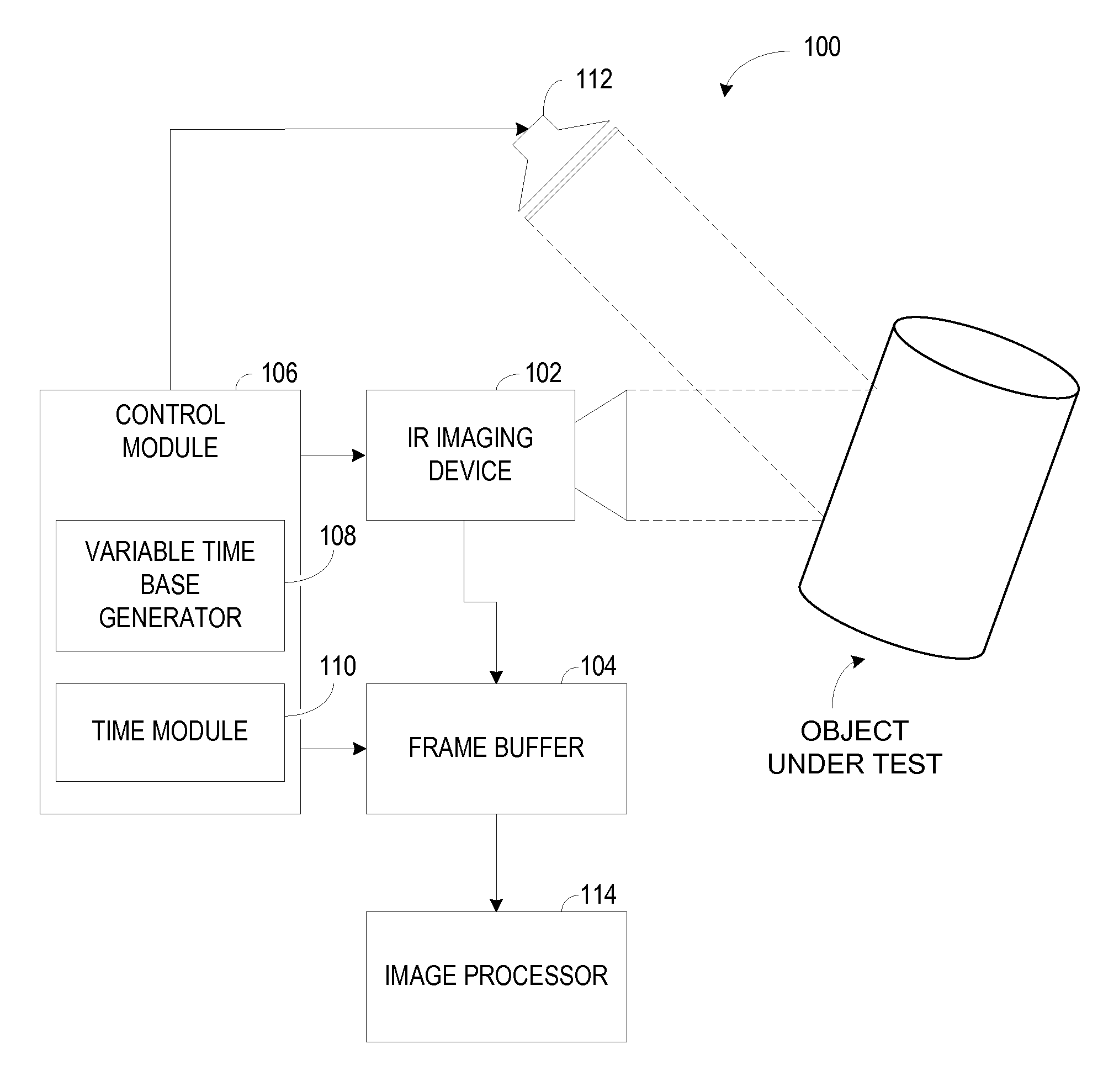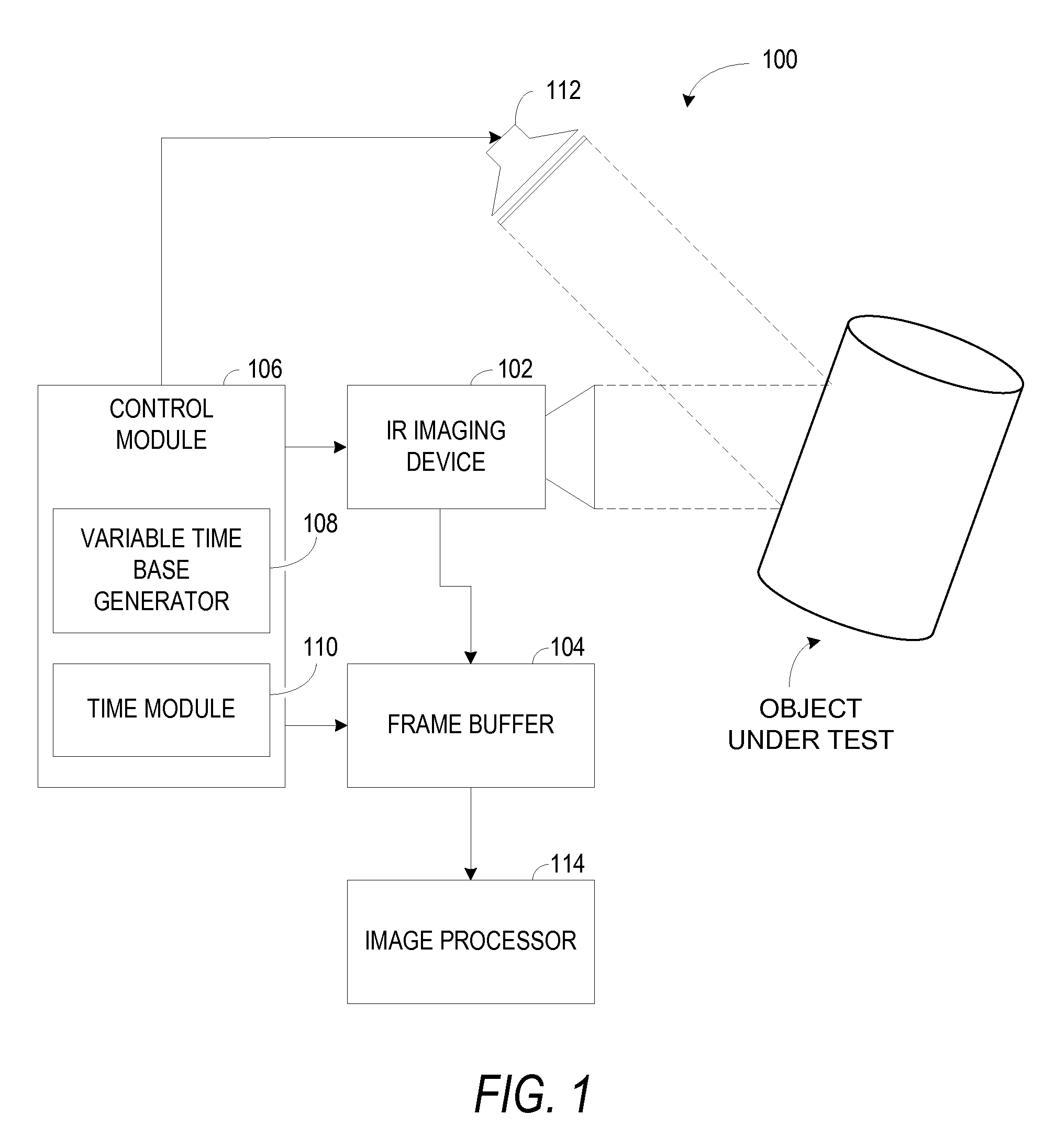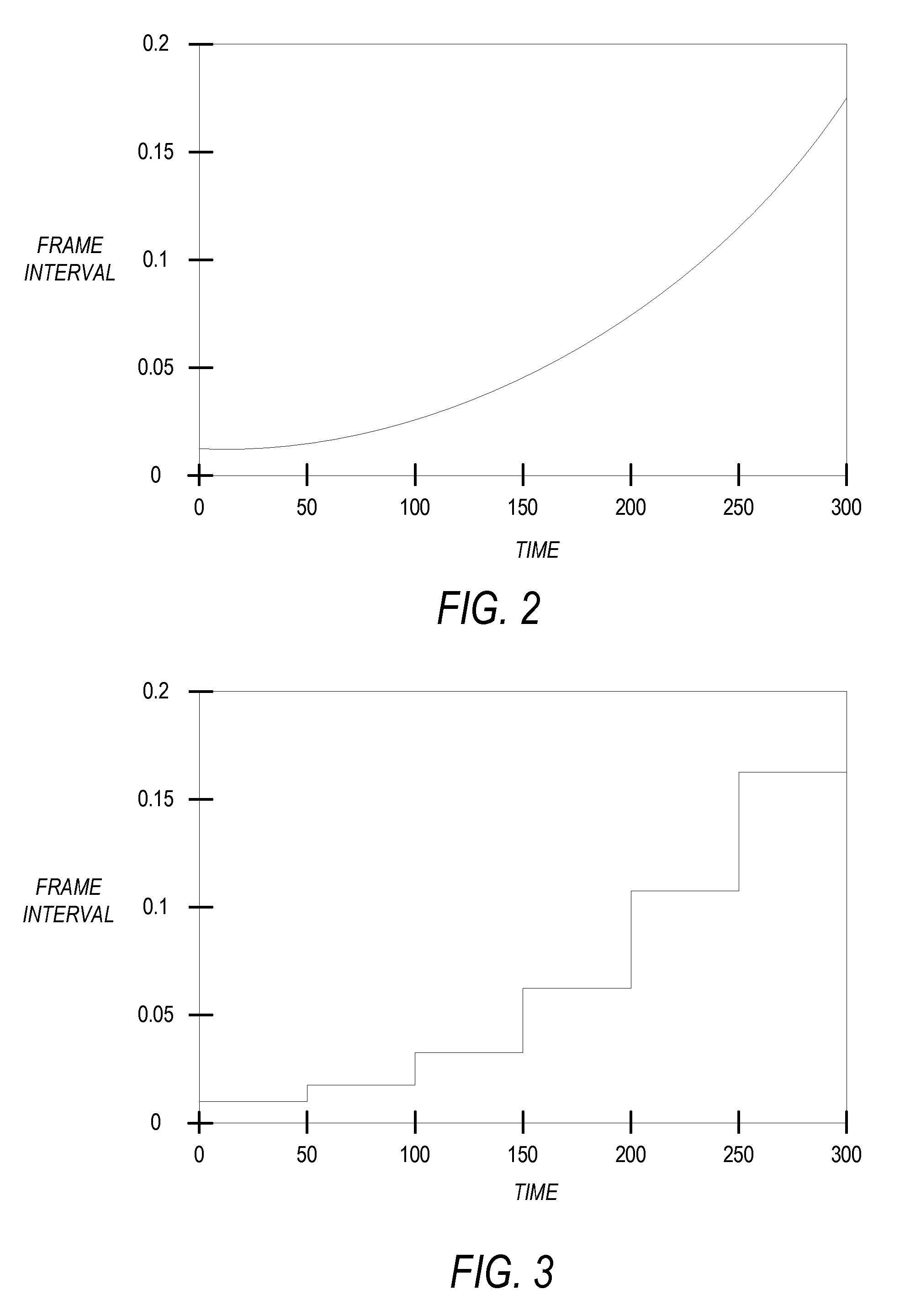System and method for thermographic inspection
a thermographic inspection and system technology, applied in the field of infrared imaging, can solve the problems of insufficient thermal image capture, high manual effort, and high skill intensity of techniques, and achieve the effects of reducing the number of thermal images, reducing the accuracy of thermal images, and increasing the difficulty of thermal imaging
- Summary
- Abstract
- Description
- Claims
- Application Information
AI Technical Summary
Benefits of technology
Problems solved by technology
Method used
Image
Examples
Embodiment Construction
[0012]Embodiments of a thermographic imaging system are presented herein. The system employs a non-linear time base for triggering an infra red (IR) camera, to enable imaging at a non-linear rate. In transient thermographic testing, for example, the object under test is heated by a predefined temperature. Heating is then stopped and the object under test allowed to return to ambient temperature. During the thermal transient, thermal activity of the object under test takes place at a non-linear rate dependant on various factors such as, but not limited to, emissivity, absorptivity, reflectivity, and temperature of the object under test. Specifically, the thermal activity occurs rapidly at the beginning of the thermal transient, and slows down as the thermal transient progresses. Thus, imaging at the non-linear rate may reduce the number of redundant images, thus reducing requirements of processing power, buffer memory, and image file sizes. The system stores temporal data associated ...
PUM
| Property | Measurement | Unit |
|---|---|---|
| time | aaaaa | aaaaa |
| thermal images | aaaaa | aaaaa |
| non-linear time | aaaaa | aaaaa |
Abstract
Description
Claims
Application Information
 Login to View More
Login to View More - R&D
- Intellectual Property
- Life Sciences
- Materials
- Tech Scout
- Unparalleled Data Quality
- Higher Quality Content
- 60% Fewer Hallucinations
Browse by: Latest US Patents, China's latest patents, Technical Efficacy Thesaurus, Application Domain, Technology Topic, Popular Technical Reports.
© 2025 PatSnap. All rights reserved.Legal|Privacy policy|Modern Slavery Act Transparency Statement|Sitemap|About US| Contact US: help@patsnap.com



